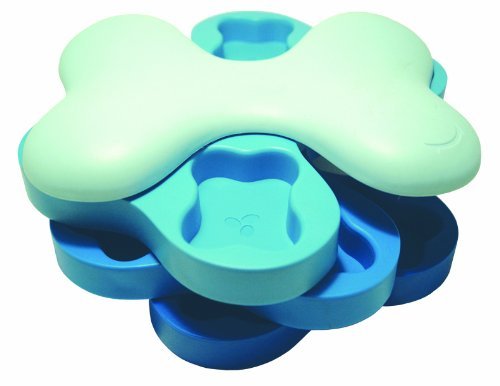

Despite diabetes being common in dogs, many owners have little knowledge of this disease, yet timely detection is imperative. Although it’s a life-threatening condition, with the appropriate treatment, correct management and life-long commitment of their owners, diabetic dogs can expect to live out their full life expectancy.
There are three forms of canine diabetes, all of which are treatable if detected early.
Diabetes mellitus is the most common form of canine diabetes and comes in two types:
Type 1 occurs when your dog’s body is not producing enough insulin.
Type 2 occurs when his body is insensitive to the effects of insulin.
Primary symptoms of this condition are excessive urination (polyuria) and increased water intake (polydipsia). As the disease progresses, weight loss is common (despite a healthy or increased appetite), and your furry friend may also become lethargic.

Also known as sugar diabetes, this condition results in high blood sugar levels (hyperglycemia), which need to be controlled by insulin therapy, diet and exercise. Most cases will require owners to administer insulin injections, regulate their dog’s diet and monitor his blood glucose levels to ensure prevention of hypoglycemia – a potentially fatal condition that occurs when blood sugar levels drop too low.
Left untreated, diabetes mellitus can lead to other disorders, which will affect your pet’s quality of life and could cause premature death.
A dog with diabetes insipidus will also exhibit signs of polyuria and polydipsia, but this form of diabetes (also known as water diabetes) is much rarer and more manageable. Dogs with this condition are unable to concentrate urine and incapable of controlling their bladder; they’re constantly thirsty and need unlimited access to water as dehydration can be fatal.

Diabetes insipidus also come in two types:
Nephrogenic diabetes insipidus occurs when your dog’s kidneys don’t respond to the antidiuretic hormone; treatment for this is usually in the form of tablets.

Central diabetes insipidus occurs when there is a deficiency of the antidiuretic hormone, and this is treated with tablets, subcutaneous injections, eye drops or nasal sprays.

Although uncommon, gestational diabetes can prove fatal to a female dog during pregnancy, so early detection and prompt treatment is vital. The symptoms are the same as diabetes mellitus, and treatment options are similar. If this condition is regulated throughout your dog’s pregnancy, the prognosis is good as gestational diabetes will often disappear after the pups are born.

Canine diabetes isn’t a death sentence if treated and managed correctly, but this will crucially depend upon you, and while this may seem initially overwhelming, it can be an incredibly fulfilling experience for both you and your dog. With patience, love and commitment, your beloved pet can still lead the full and happy life that he deserves.
 Living With A Diabetic Dog: How To Keep Your Dog Healthy, Prevent Common Problems And Avoid Complications
Living With A Diabetic Dog: How To Keep Your Dog Healthy, Prevent Common Problems And Avoid Complications Canine Diabetes Handbook
Canine Diabetes Handbook 3 Tips to Stop your Dog from Pulling on the Leash While Walking and Keep Your Arms in Their Sockets
3 Tips to Stop your Dog from Pulling on the Leash While Walking and Keep Your Arms in Their Sockets
 How To Get Rid Of Ticks on Dogs Using Safe and Cheap Alternatives to Frontline Flea and Tick Control
How To Get Rid Of Ticks on Dogs Using Safe and Cheap Alternatives to Frontline Flea and Tick Control
 Why You Should Adopt A Rescue Dog For Your Family
Why You Should Adopt A Rescue Dog For Your Family
 Dog Ramps for the SUV
Dog Ramps for the SUV
 Canine Nutrition and Wellness Part 1: Choosing the Right Commercial Food for Your Dogs
Canine Nutrition and Wellness Part 1: Choosing the Right Commercial Food for Your Dogs
 Five Ways to Stop Dog Barking When You Leave Your Pet Alone
Five Ways to Stop Dog Barking When You Leave Your Pet Alone
 Commercial or Raw BARF Diet for Dogs?
Commercial or Raw meat (BARF) diet for dogsIs commercial or
Commercial or Raw BARF Diet for Dogs?
Commercial or Raw meat (BARF) diet for dogsIs commercial or
 How Not To Use Treats In Dog Training
Treats are a valuable traini
How Not To Use Treats In Dog Training
Treats are a valuable traini
 5 Cute Dog Toy Storage Ideas
If you have a dog and/or mul
5 Cute Dog Toy Storage Ideas
If you have a dog and/or mul
 Dog Leash Training
A pet owner should always ta
Dog Leash Training
A pet owner should always ta
 Have Furry Children? Four Important Facts for Happy Pets
Whats the saying? Happy Pets
Have Furry Children? Four Important Facts for Happy Pets
Whats the saying? Happy Pets
Copyright © 2005-2016 Pet Information All Rights Reserved
Contact us: www162date@outlook.com